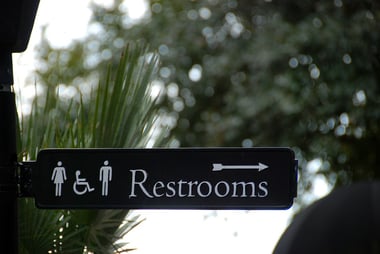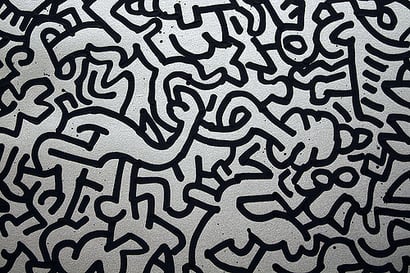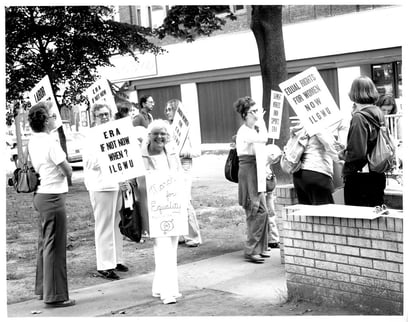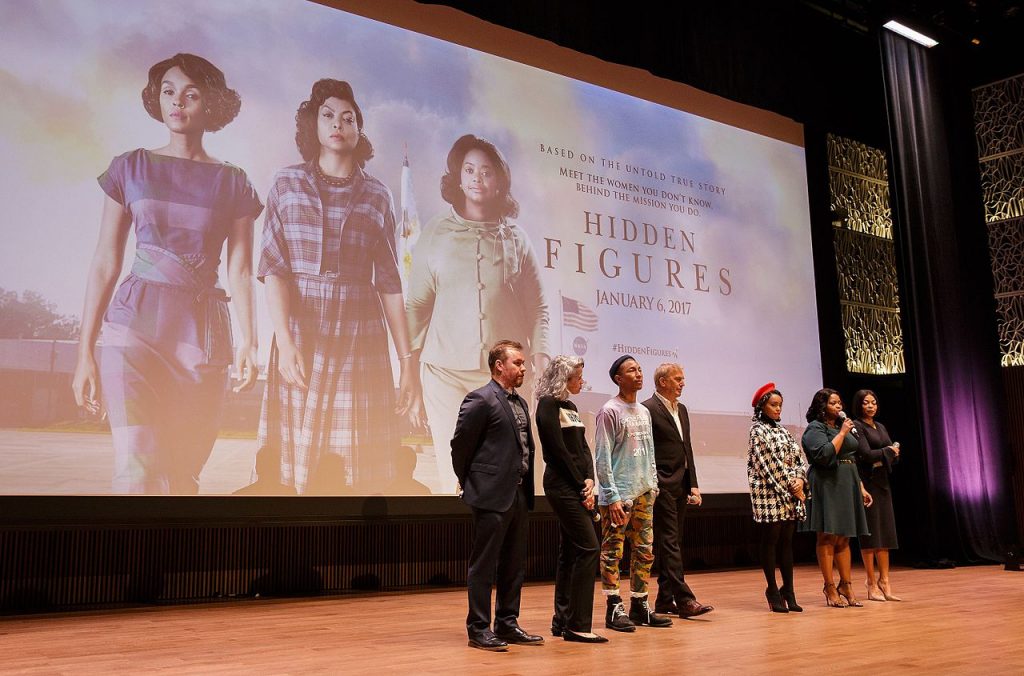There are many reasons why I love the movie “Hidden Figures,” a film about the brave and brilliant African-American women that worked at NASA’s Langley Research Center at a time when racial segregation and sexist employment discrimination was part of the texture of everyday life. One of things that film portrays exceptionally well is how segregated facilities were so humiliating and disruptive to the lives of African Americans living under Jim Crow. The film gave me an opportunity to reflect on the long history of the policing bodies in public space (public bathrooms, in particular) in order to maintain racial and gender purity, and the film also provided resources for thinking about histories of resistance that can orient us in the present.
A major plot line of “Hidden Figures” involves the film’s protagonist, Katherine Johnson (a mathematical computing genius that calculated the trajectories of John Glenn’s space launch, orbit, and landing), almost losing her job because she must run 30 minutes across Langley’s campus several times a day in order to access the only bathroom available to her: a segregated “colored ladies room” in the basement of a far-away building that is virtually inaccessible from her desk as part of NASA’s Space Task Group. The film contains several scenes of Johnson running with heavy stacks of notebooks and reports to and from the colored ladies bathroom with calculations she intends to review and compute while on the toilette in order that she not waste any more time away from her desk.

At a moment when tensions are high at Langley due to Russian technological advances that begin to beat out the United States in the space race, Johnson’s boss, Al Harrison, wonders why Johnson is gone for such long periods of the day. When Johnson arrives soaking wet to the Space Task Group room after having to run across campus to use the colored ladies bathroom during a rainstorm, Harrison publicly chastises Johnson for her absences and threatens to fire her. In a passionate defense of her life and her dignity, Johnson turns the tables and chastises her co-workers for perpetuating a system that has made life impossible for her and that has placed serious barriers against her basic ability to work and inhabit an office space.
In response of Johnson’s impassioned vindication of her right to be at NASA without unnecessary structural barriers, Harrison takes a crow bar, marches across Langley’s campus, and rips the “Colored Ladies Room” sign off the wall—effectively ending segregated bathroom facilities at Langley. And, although the interaction between Johnson and Harrison is the product of creative fiction (the character of Harrison is not a historical figure), it speaks loudly to the truth that one cannot occupy public space, go to school, or do one’s job without proximity to an accessible bathroom.

The Trump administration recently stated that it plans to revoke and reverse Obama-era orders and legal interpretations that had instructed schools to allow transgender students to use the bathroom that corresponds to their gender identity. Numerous state legislatures are currently taking up anti-trans “bathroom bills” that prevent trans people from using the bathroom that corresponds to their gender. In this moment of national cis-hetero panic over transgender people’s bathroom usage, it is worth reflecting on how this moment is connected to past histories of state apparatuses using public policy around bathrooms to produce gender-conforming, heterosexual citizens that respect the norms of middle-class whiteness. It also calls us to think about how people in the past and in the present have resisted these policies and asserted their right to be in the public space.
Any discussion of the policing of bodies in public bathrooms immediately brings to my mind the long history of the entrapment by police of gay men in public space, particularly public bathrooms. Police Departments regularly send in plainclothes police officers, often the most of handsome men that no one would refuse, to lure gay men into public restrooms only to arrest them moments later. Gay men’s livelihoods have been threatened due to police entrapment, particularly in small towns where the name of the person entrapped circulates in the local newspapers. Many men have been jailed, fined, and put on sex offender registry lists. Indeed, one of the effects of gender-segregated bathrooms is that it facilitated public intimacies between men. Such intimacies had to be policed and monitored to maintain heterosexuality’s hold on citizens.

Thinking about the policing of bodies in public bathrooms also brings up the early days of the HIV/AIDS crisis and early legislation that attempted to quarantine HIV-positive individuals. Indeed, if it wasn’t for the early intervention of AIDS activists and disability activists, “HIV-negative only” and “HIV-positive only” bathrooms may have become a permanent feature of public space. No doubt, it would have made it impossible for HIV-positive students to attend school or college without stigma and constant surveillance.
And, I instantly think of how the ratification of ERA (the Equal Rights Amendment), a constitutional amendment that would have provided equal pay and protection against job discrimination to women, failed to pass because of the smear campaigning that played to heterosexual fears that men and women might have to share the same bathroom. (Indeed, conservative activist Phyllis Schlafly created an entire public campaign around the twin specters of homosexuals in school bathrooms and public bathrooms and of ERA unisex public bathrooms that continue to inform anti-trans legislation to this day.)

But, people resisted. And people are resisting now. Transgender students and their allies across the country are holding “shit-ins” to protest “bathroom bills” and discriminatory treatment. Gay men and their allies are organizing the “crashing” of cop beats, such as queer disruptions and occupations of public parks in Toronto where gay men have been targeted for arrest. And, the history of HIV/AIDS activism with groups like ACT UP provide a treasure trove of strategies and tactics for using art, performance, demonstrations, public occupations, and marches in order to bring attention to the unequal distribution for the chances for a livable life. And, “Hidden Figures” reminds us, the fight for black lives in public space in not over. Black people, particularly black young people, are constantly policed in public space to the point of early death. Black Lives Matter has been effective in documenting, protesting, resisting police violence, particularly violence against Black trans women.
The policing of bathrooms was meant to divide people and create them into docile, properly gendered and properly racialized citizens. However, as Michael Foucault once said, “where there is power, there is resistance.” Bathroom politics have created resistant, activist subjects and brought together diverse coalitions with the common demand that people have a right to public space.

This post was written by ViiV Point Scholar Kevin Henderson.
Kevin is is a doctoral student in political science at the University of Massachusetts Amherst. Kevin graduated from John Carroll University with top honors and followed up with a year of full-time, postgraduate volunteer service with Jesuit Volunteer Corps. His research focuses on histories of queer, feminist, and anti-racist activism. Read more about Kevin here.

